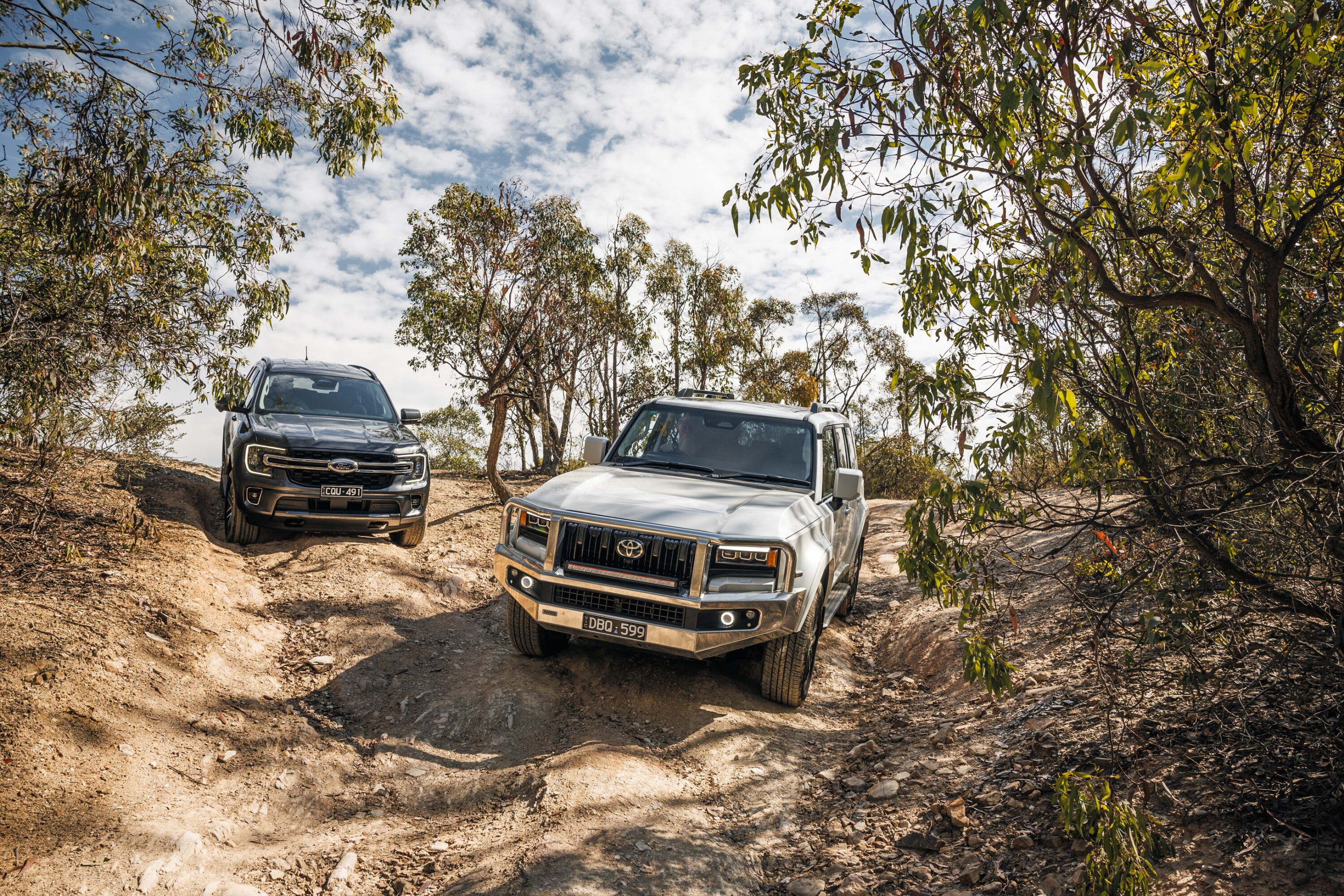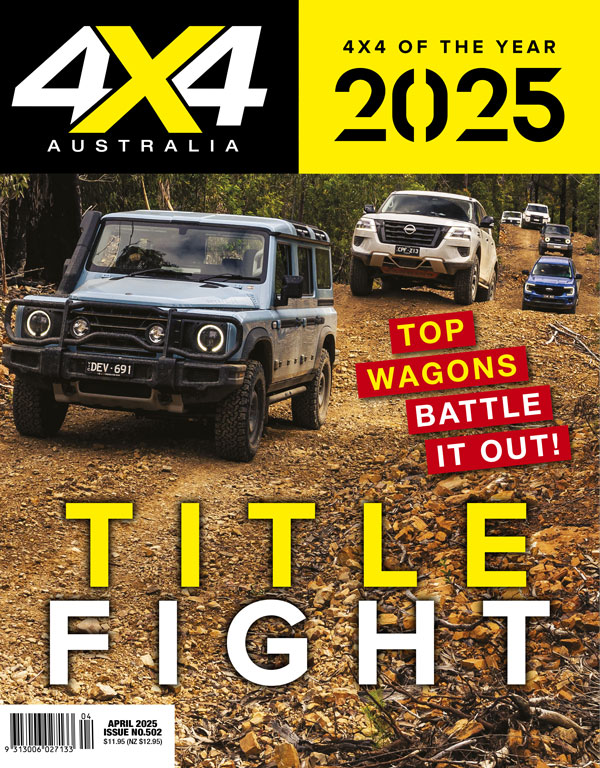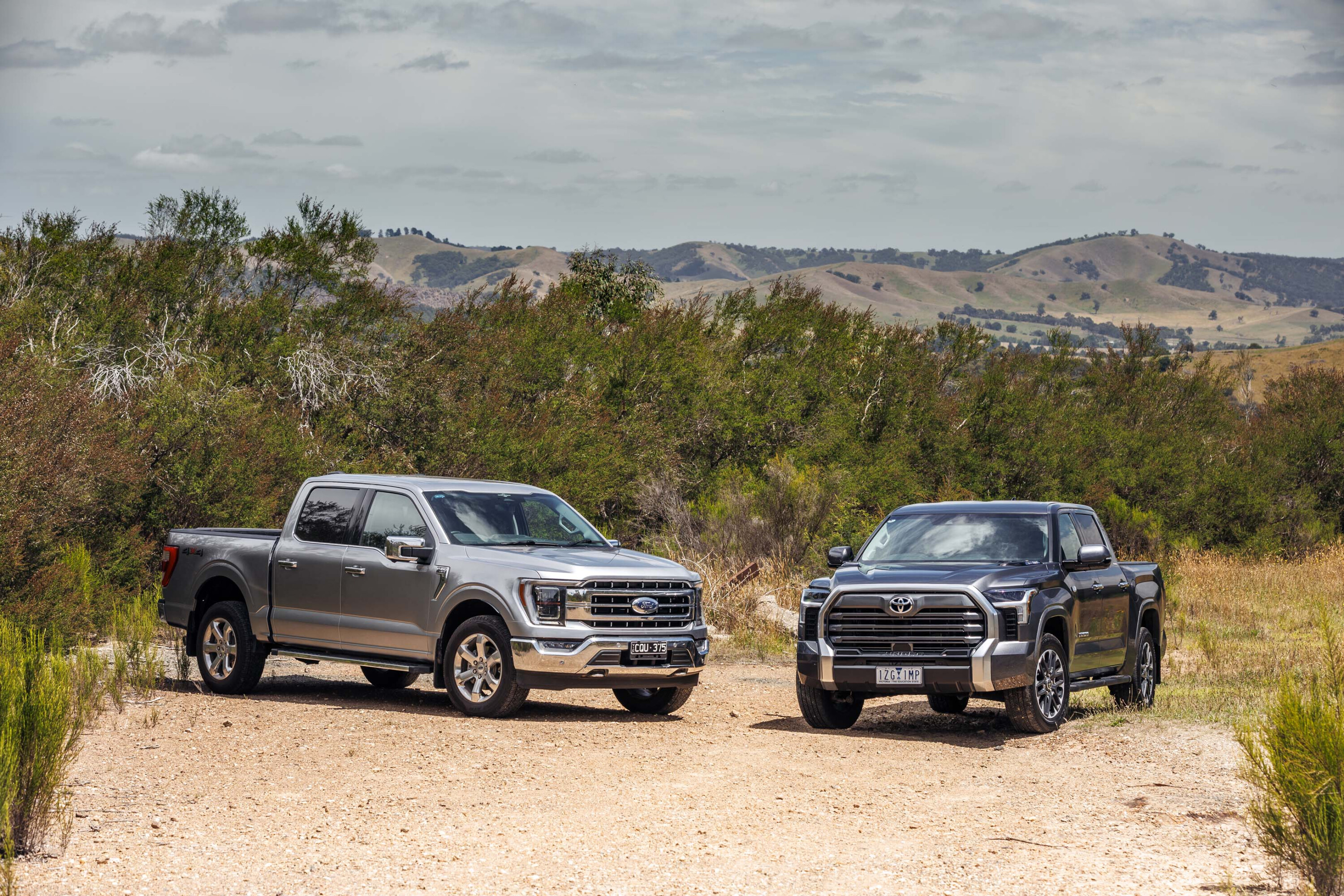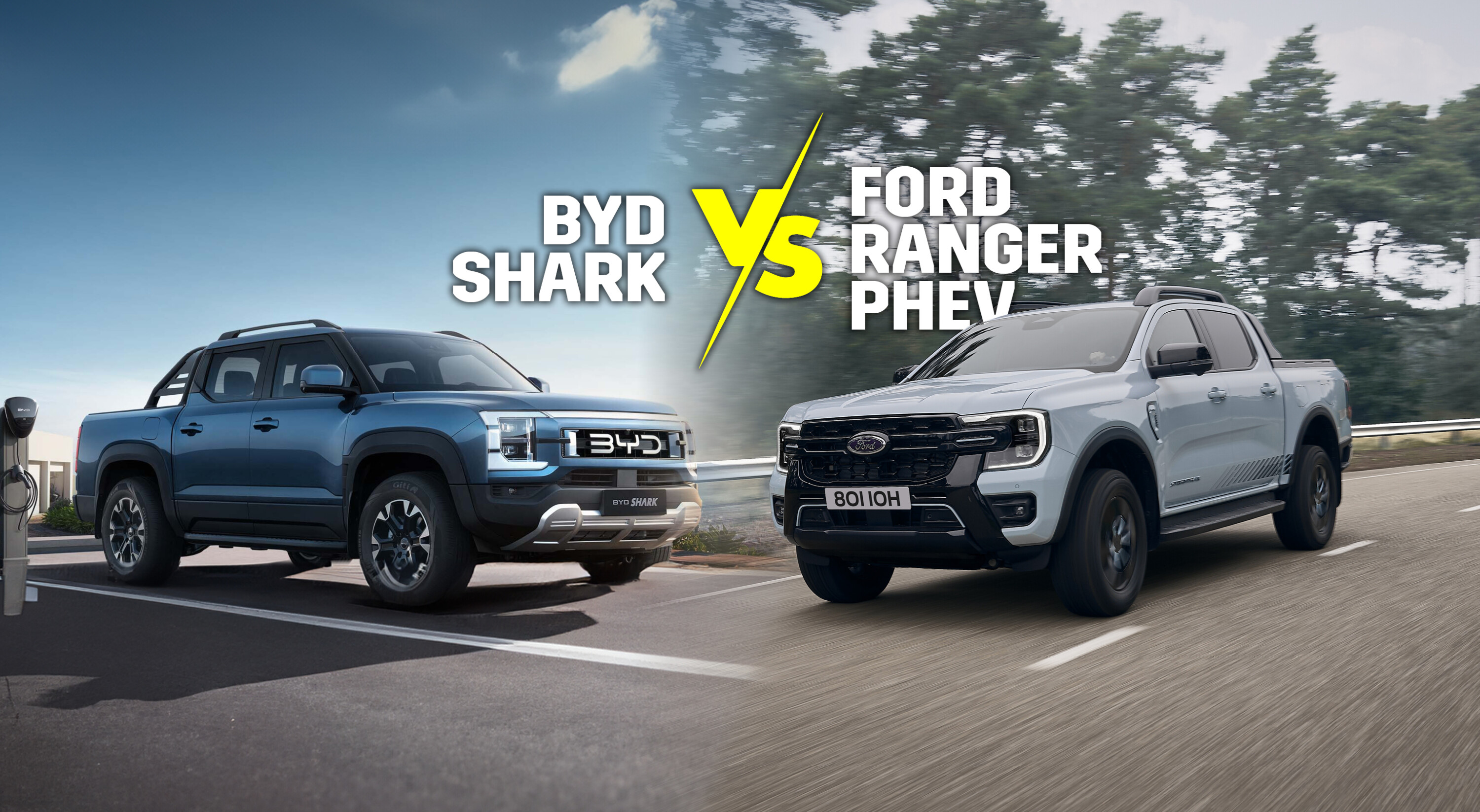New Toyota Prados don’t come around too often, so when one does it’s big news.
After all, the Prado is one of Australia’s most popular and best-selling 4×4 wagons, so popular in fact that it has outlived the vehicle that it mimicked, Mitsubishi’s legendary Pajero.
First seen in Australia in the mid-1990s (the earlier 70 Series Prado was never offered here) the 90 Series Prado took the recipe for the Pajero (right down to the model name) and gave it a Toyota flavour to great effect, starting a decades-long battle between the popular family 4×4 wagons.
The 120 Series Prado landed in 2002 and rose to supremacy in the category over the next seven years until the 150 Series launched as essentially an upgraded 120, and saw the end of the once ground-breaking Mitsubishi Pajero.
Now, 2025 brings us the almost all-new 250 Series Prado that it set to take the badge to new levels of market influence.
With Pajero now gone and with little hope of a rebirth, the Prado’s closest competitor in the midsize 4×4 wagon marketplace is the Ford Everest, now in its second iteration and the market leader in 2024 while the outgoing Prado was in sales run-out mode with very limited availability.
The 250 Series Prado arrives in five model grades priced from $72,500 (+ORC) for the entry level GX to $99,990 (+ORC) for the Kakadu.
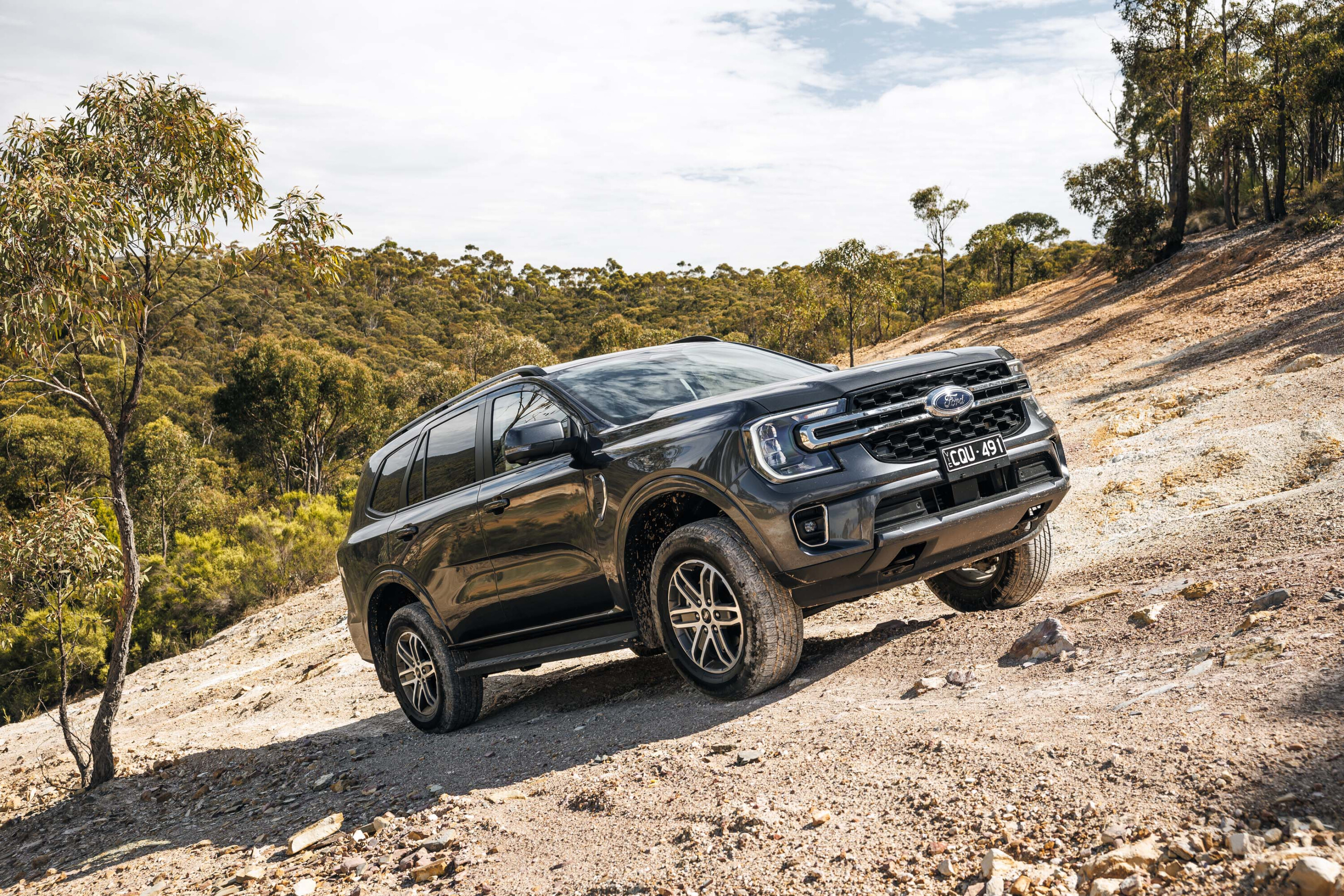
As the Prado is only offered with a four-cylinder engine we thought it only fair to compare it with a similarly powered vehicle. However, the highest price and specification four-cylinder Ford Everest, the Trend 4×4 at $67,470(+ORC), still costs less than the cheapest Prado.
We would have liked to have compared the Everest Trend to the $72,500 Prado GXL, but the only Prado available to us at the time of our test was a top-of-the-line Kakadu; so that’s what we have here and, as the powertrains are the same throughout the Prado line-up, we compared them as is, with consideration to the features list.
JUMP AHEAD
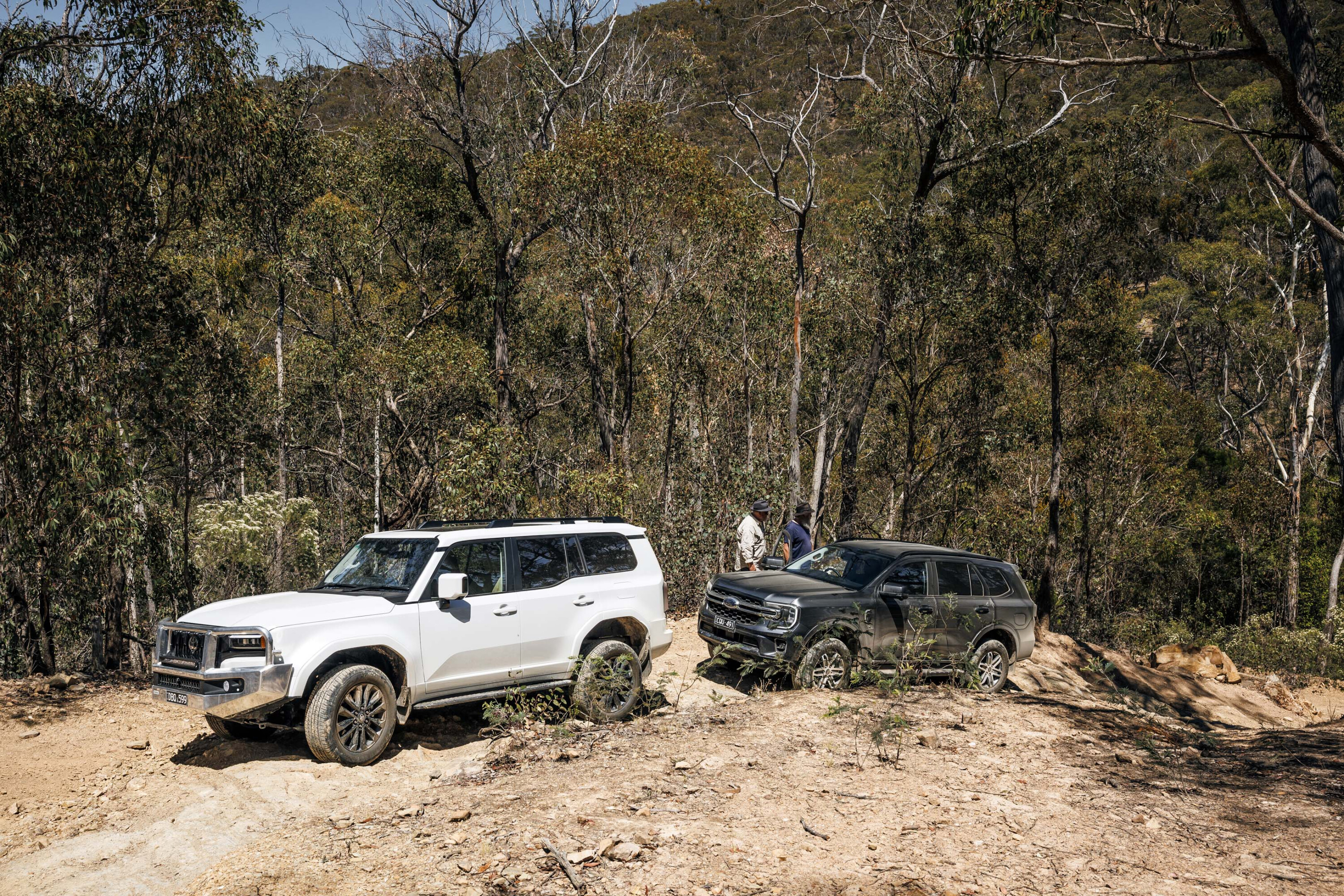
2025 Toyota Prado Kakadu
As the top-of-the-range model the Prado Kakadu comes loaded with all the trimmings.
Like the rest of the 250 Series this starts with a premium 12.3-inch multimedia screen that is compatible with wireless Apple CarPlay and Android Auto, Bluetooth connectivity, and cloud-based inbuilt sat-nav, a panoramic moon roof, leather-accented seat trim with eight-way power adjustment and power lumbar support along with memory for the driver and four-way power adjustment for the passenger seat, heated and ventilated front and second-row seats, manually-adjustable driver seat cushion length, digital rear view mirror, heated steering wheel and heads-up display.
There’s also a 12.3-inch digital instrument cluster which is bigger than the models below VX spec. A refrigerated console chiller is also a part of the package as is a power-adjustable steering column and a JBL sound system pumping out through 14 speakers. It’s a full on luxury interior worthy of the $100k price tag.

The Kakadu is only available as a seven-seat model with five-seats only offered on the entry-level GX and Altitude models. Herein lies the biggest criticism of the 250 Series Prado as the packaging of the third-row seat in the back of the vehicle is horrendous.
Instead of folding into the floor as they did in the 150 Series, or up to the sides as they did in earlier models, the seats fold on top of the floor, totally ruining the rear cargo area for carrying cargo or anything else. It has to be one of the worst designs we’ve seen in any new vehicle in decades and it came about because of the engine’s 48-volt mild-hybrid system which mounts its battery and inverter under the rear floor section.
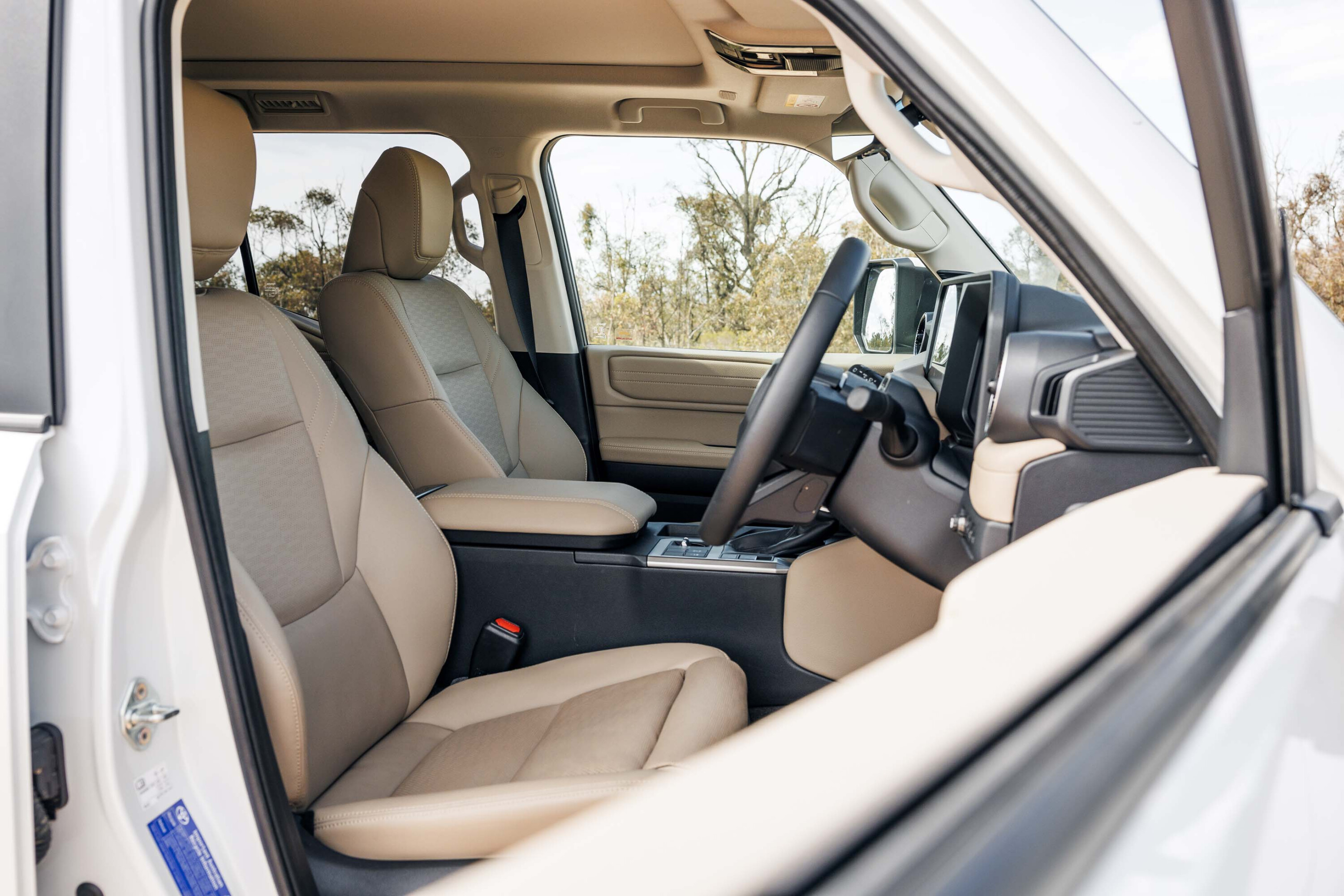
When you consider the very limited benefits of the mild-hybrid system you need to weigh that up against the cost of losing a usable cargo area. For a touring 4×4 wagon, you would think that cargo carrying capacity would always be a priority and this is a deal breaker for us! Even the five-seat GX and Altitude models are compromised here although not as badly as the seven-seat models.
If you can draw a positive at all from this third-row seat set up it’s that when in use, the taller cabin of the Prado compared to that of the Everest allows adults to use the seats, whereas no one taller than a hobbit could comfortably fit in the third row of the Ford.
More positive is that the aftermarket has been able to remove the seats to install drawers and sensible storage solutions.
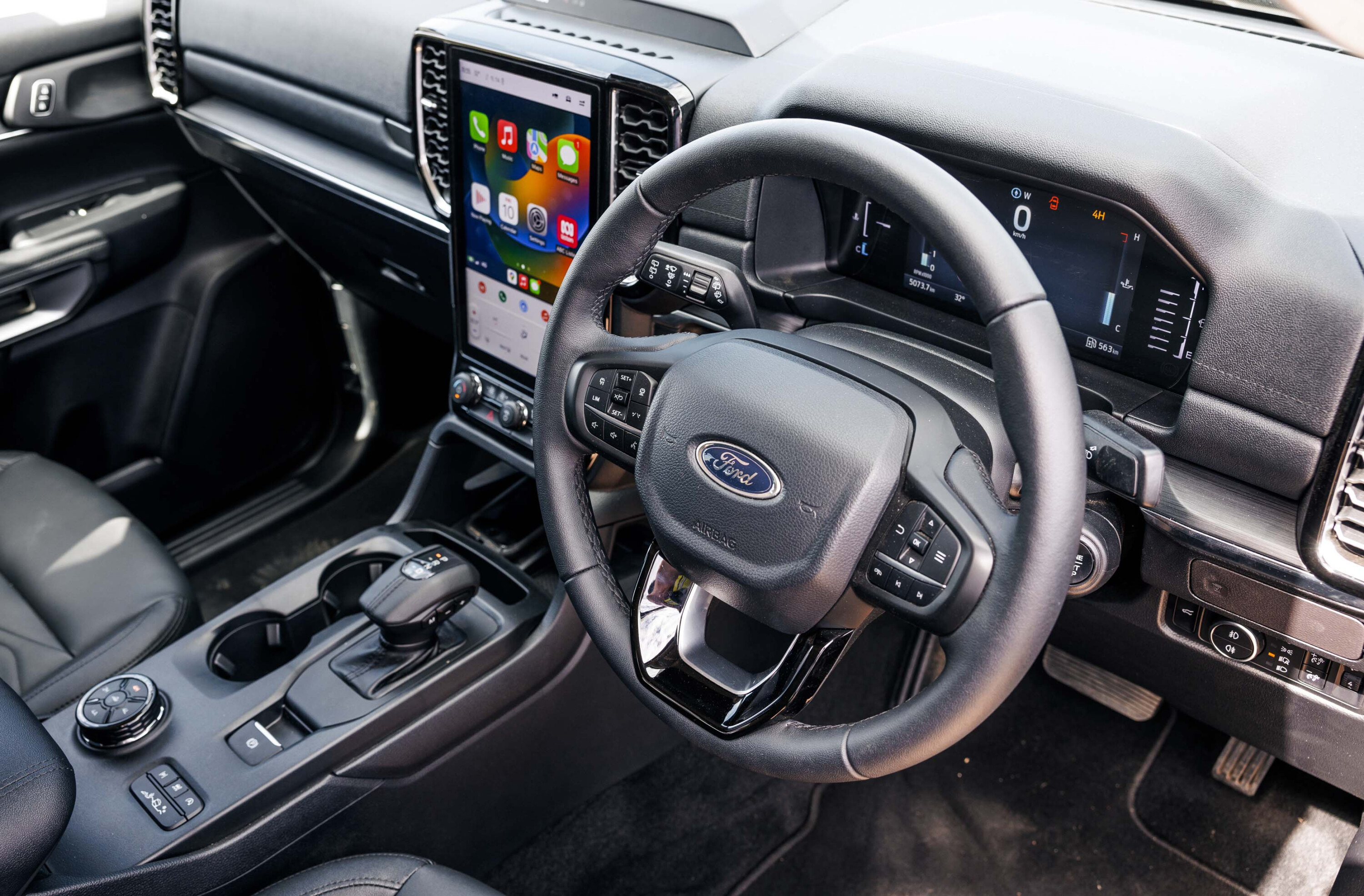
The Prado’s 2.8-litre 500Nm engine provides plenty of punch for highway and off-road driving although it can’t keep up with the Everest’s bi-turbo engine when it comes to foot-to-the-floor acceleration.
The new Toyota eight-speed automatic transmission is quick to kick down and respond to a floored throttle, and the engine pulls adequately with that familiar four-pot diesel rumble. Cruising at highway speeds is comfortable with the engine ticking along at just 2300rpm at 110km/h.
Any thoughts that the 1GR-FTV engine wouldn’t deliver the performance and refinement expected of a new Prado are unfounded, even if it’s a long way from the performance of the turbocharged V6 in the Lexus GX550, which is essentially the same vehicle with a better powertrain.
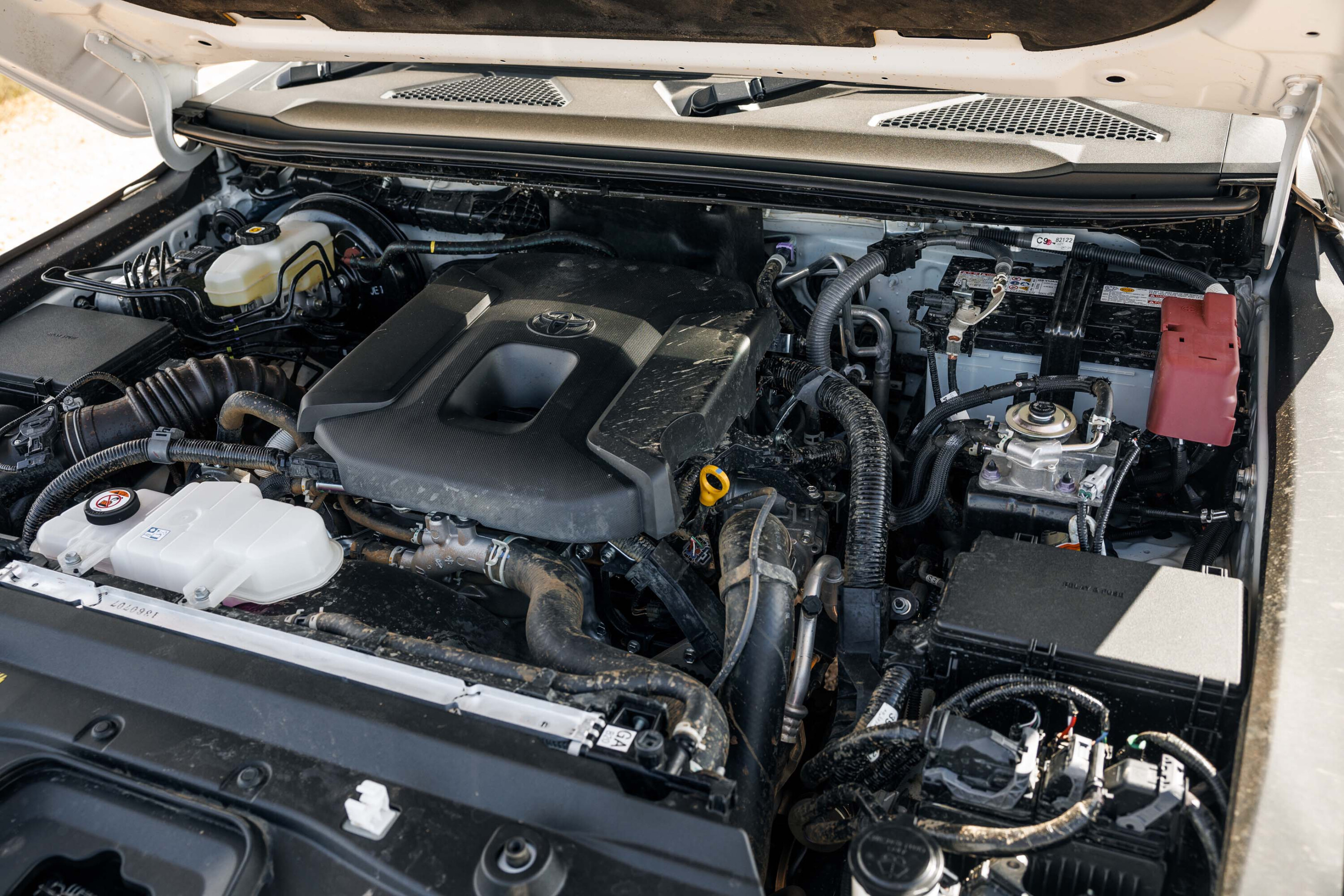
Like previous generations of Prado, the 250 uses a full-time 4×4 system with a lockable centre differential and dual range transfer case. It’s easy to use and our experience with it so far is that it is quick to operate when you hit the lock button and/or toggle into low range.
The Kakadu does away with the locking rear differential of the Altitude model below, and instead uses a Torsen limited-slip rear diff. When driving off road and when wheel slip is detected at the rear end you can feel the Torsen diff kick in and get you through the obstacle without much fuss.
Compared to the selectable locker in the Altitude, the Torsen diff eliminates the driver’s need to lock the diff manually as it does so automatically, but it does need to detect the slip before it engages and that little delay could be enough to see you stuck in some instances.

The Kakadu comes with a multi-terrain selector with modes for rock, sand, snow, etc as well as Crawl Control, which we continue to say works amazingly well at maintaining steady progress over and up an obstacle or a tricky track without any application of the throttle by the driver.
Crawl control does this for you while distributing the drive to the wheels with the most traction making easy work of rough tracks.
The Kakadu gets Toyota’s Adaptive Variable Suspension (AVS) which adjusts the dampers to suit the driving conditions and the selected drive modes. The system can continuously adapt damping to smooth out road imperfections and minimise body roll, and will control damping force in accordance with vehicle speed and braking force to keep the vehicle level.
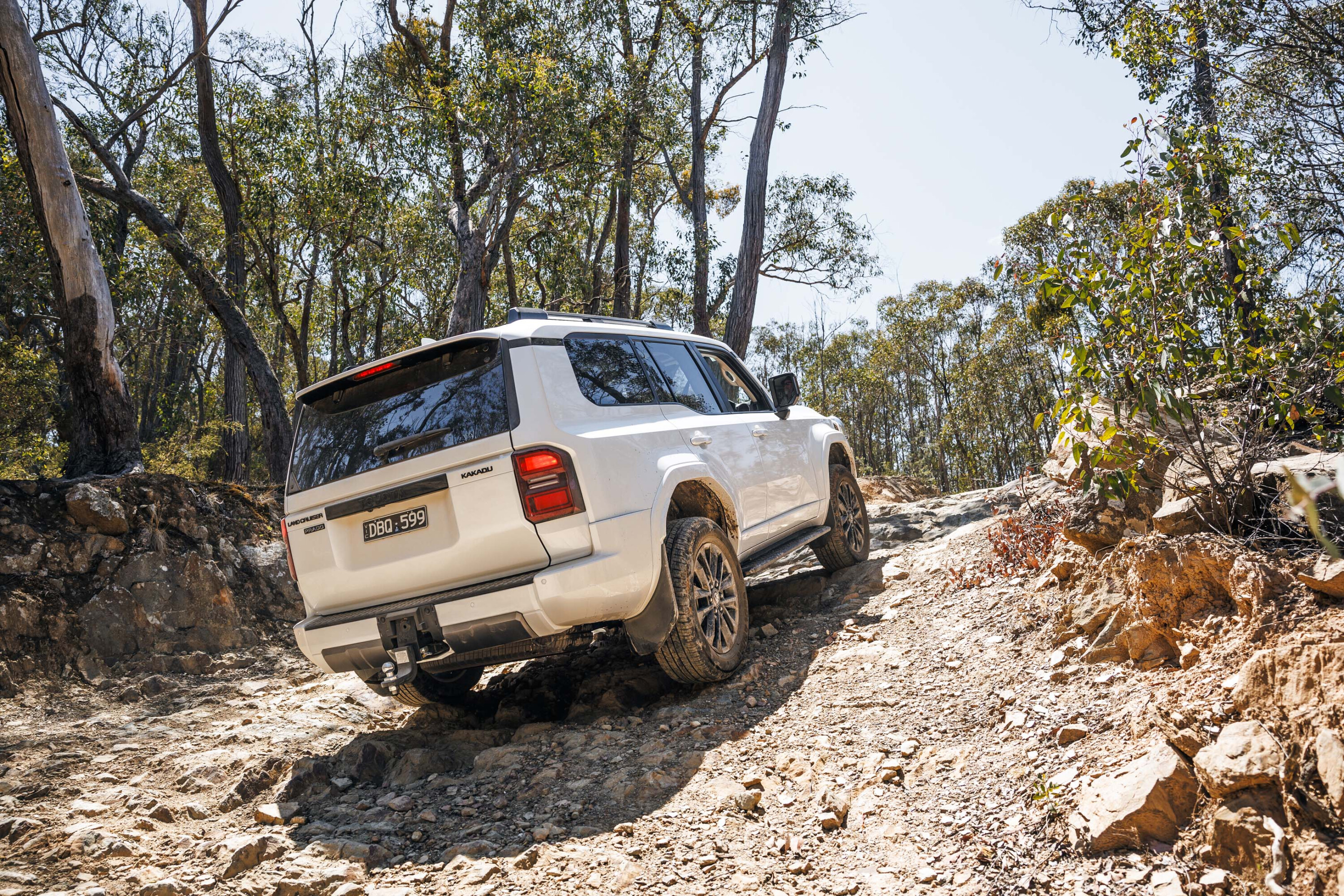
AVS also delivers benefits when off-roading, changing the suspension calibration when in low range to further improve ride comfort on rough roads and, as always with Toyota 4x4s, the rear suspension delivers excellent axle articulation to keep tyres on the ground in uneven terrain.
The Kakadu comes standard with 20-inch alloy wheels and low-profile tyres which are less than ideal for off-road driving however the 18-inch wheels of the lower grades will fit, and 17s should as well.
Let’s cut to the chase here: if you want a wagon with seven or more seats to accommodate passengers, there are SUVs and people movers out there that will do this job much better than the Prado can.

The Prado has always been a competent bush touring vehicle and to do that job in Australia, it needs to have a sensible and practical cargo area, and the seven-seat 250 Series fails terribly in this regard.
Sure, you could load all the seats with kids and rely on a trailer or caravan to carry all your gear but not everyone wants to tow, and towing will limit where you can take the vehicle off road. Towing a large caravan behind a fully loaded Prado will quickly put you in the red zone for the car’s GVM and GCM, which needs to be considered.
For what its worth, Toyota quotes a higher cargo volume in the rear with the third-row seats stowed than the Everest – 906-litres to 898-litres. This comes in part thanks to its higher roof but the clincher is using that space by stacking gear on top of the folded seats in the Prado compared to the sensible flat floor in the Ford.
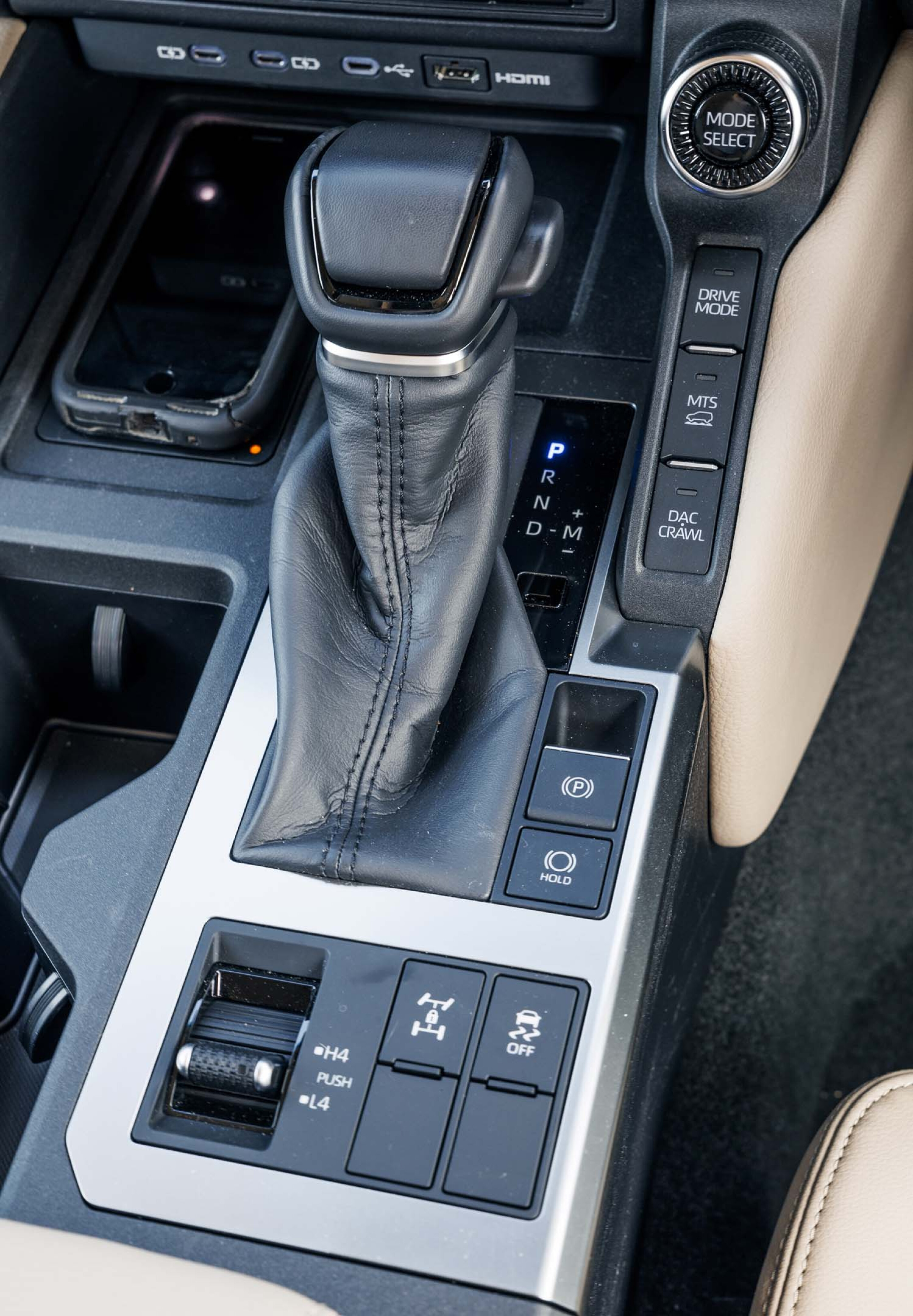
2025 Ford Everest Trend
Ford’s next-gen Everest has been with us nigh on three years now and it’s unique in this segment as it offers a choice of powertrains across its broad model mix.
The standard engine is the 2.0-litre bi-turbo diesel that puts out a strong 500Nm of torque to match the larger capacity but single turbo Toyota 2.8 engine. For those wanting more from their Ford wagon there is the option of a 3.0-litre V6 diesel but we’ve chosen to use the four-cylinder for this test to even out the battle.
The Ford engine just pips the Toyota for kilowatts and the Everest is a few kilos lighter than the Kakadu. This was reflected in our sprint test where the Everest Trend pulled away from the Prado.
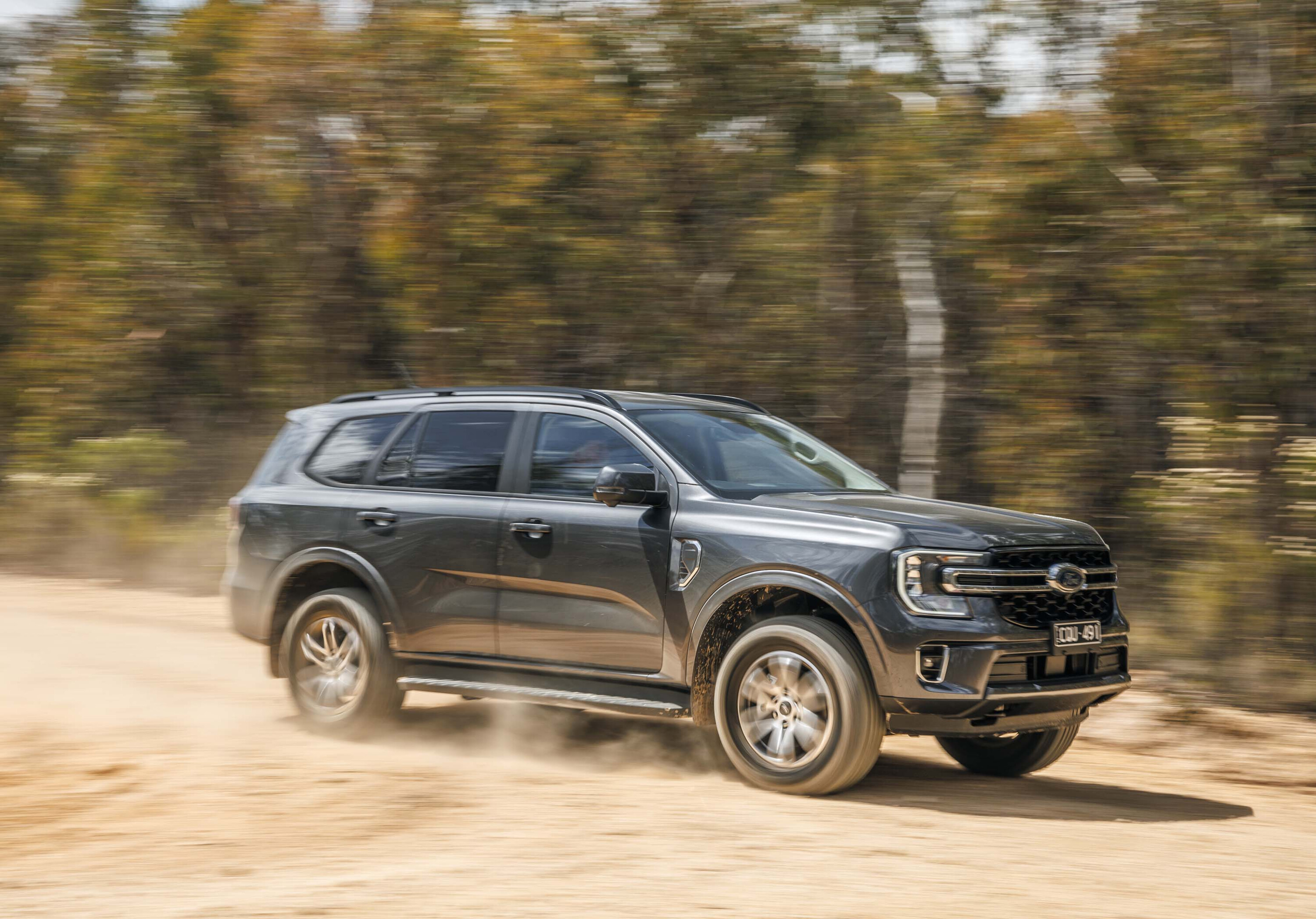
The Ford engine is backed by a 10-speed automatic and a transfer case that offers on demand 4×4 as well as high and low range and two-wheel drive.
The Trend’s drive modes include an Eco mode, normal driving, slippery roads, sand driving and mud and ruts for off-roading, as well as a Tow/Haul mode. In the tow mode you can access Ford’s clever trailer tech which includes Sync4 set up, integration and towing checklist, with an integrated factory electric brake controller.
All Everest 4×4 models have a 3500kg towing capacity, the same as the Prado, while the GCM is rated at 6250kg.
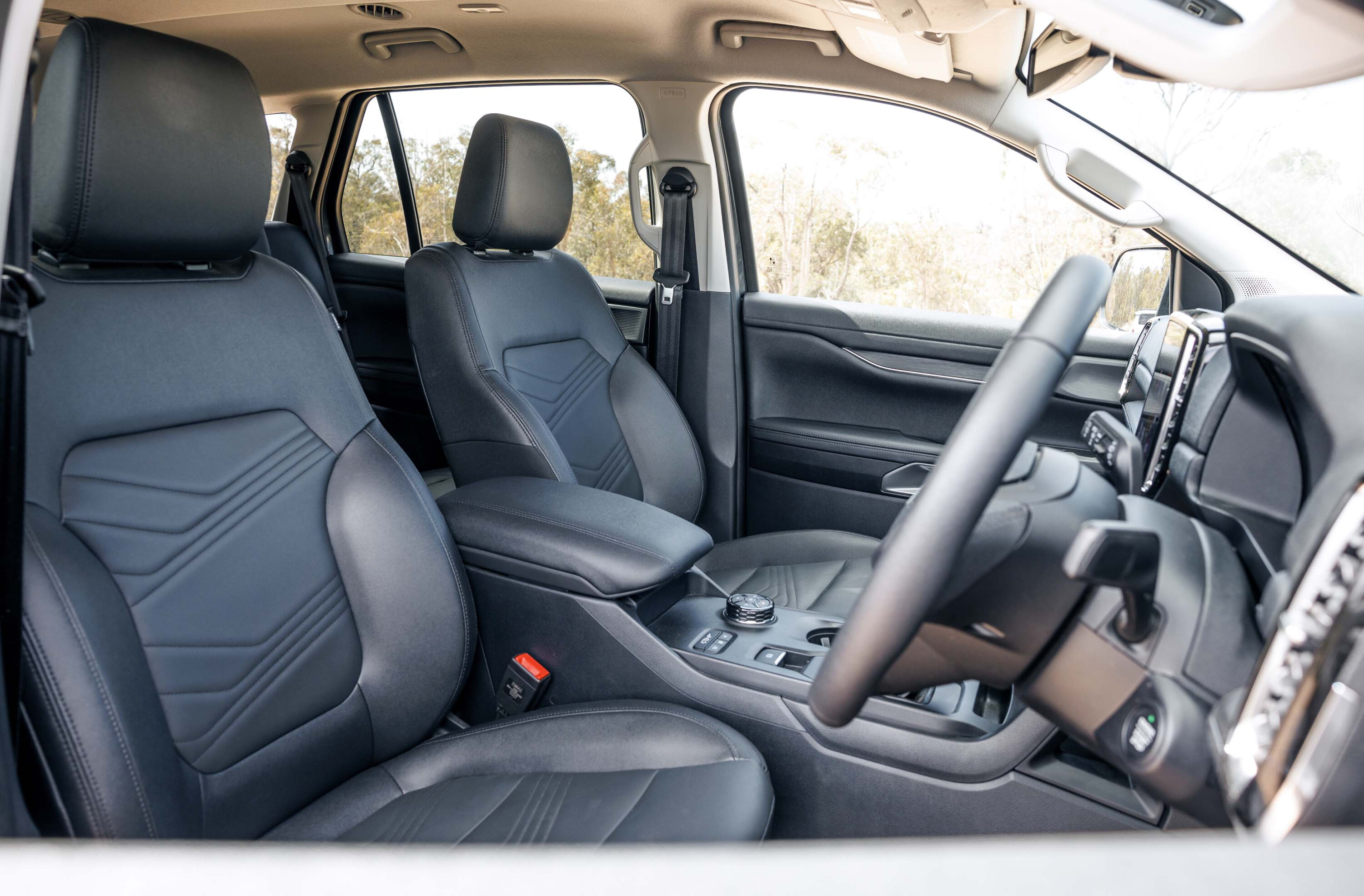
There’s no adjustability or electrickery in the Everest’s suspension that follows the standard recipe of an IFS front-end with a live axle at the rear with coil springs, however it uses a Watts linkage for lateral axle location.
As we’ve found in comparisons in the past, Ford tunes the suspension on its 4x4s to be firmer and more sporting than the more supple and comfortable setups under Toyotas, and nothing changes here. The result is that Everest rides flatter than the Pardo on road, despite the Kakadu’s AVS, while off road the Prado is more supple and comfortable and has better wheel travel, especially at the rear.
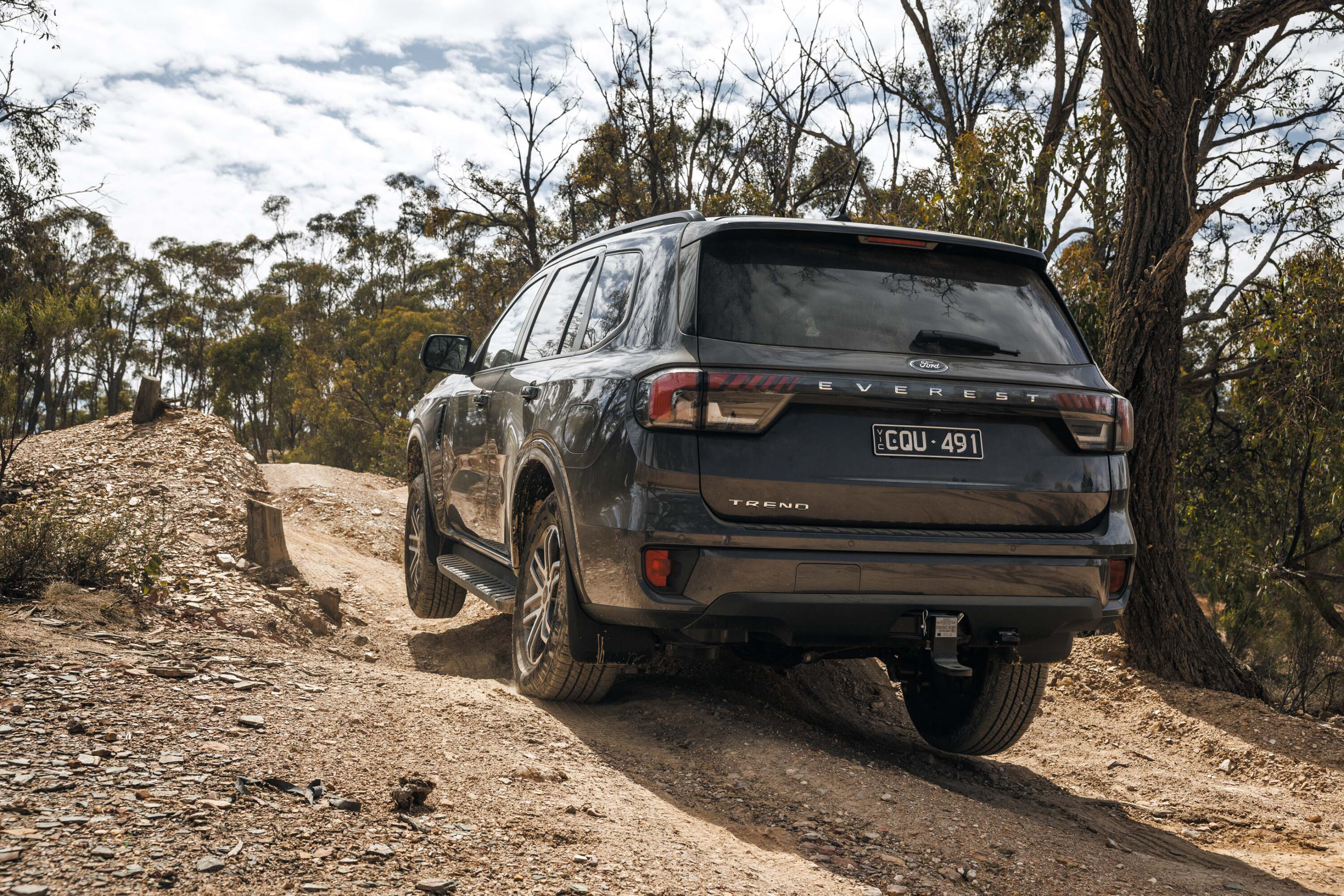
Verdict
Just as we found with the way these two manufacturers tune their suspension systems, there are many other characteristics typical of each of the two marques.
The Prado continues to have a taller cabin than the Everest, giving the feeling of an airier and more spacious interior. This is accentuated in the Kakadu with the light tone of its trim and its panoramic sunroof. By comparison, the Everest feels more confined with its lower roof and darker trim. The height difference was also noticeable in the third-row seat test where there was space for an adult in the back of the Kakadu but not in the back row of the Trend.
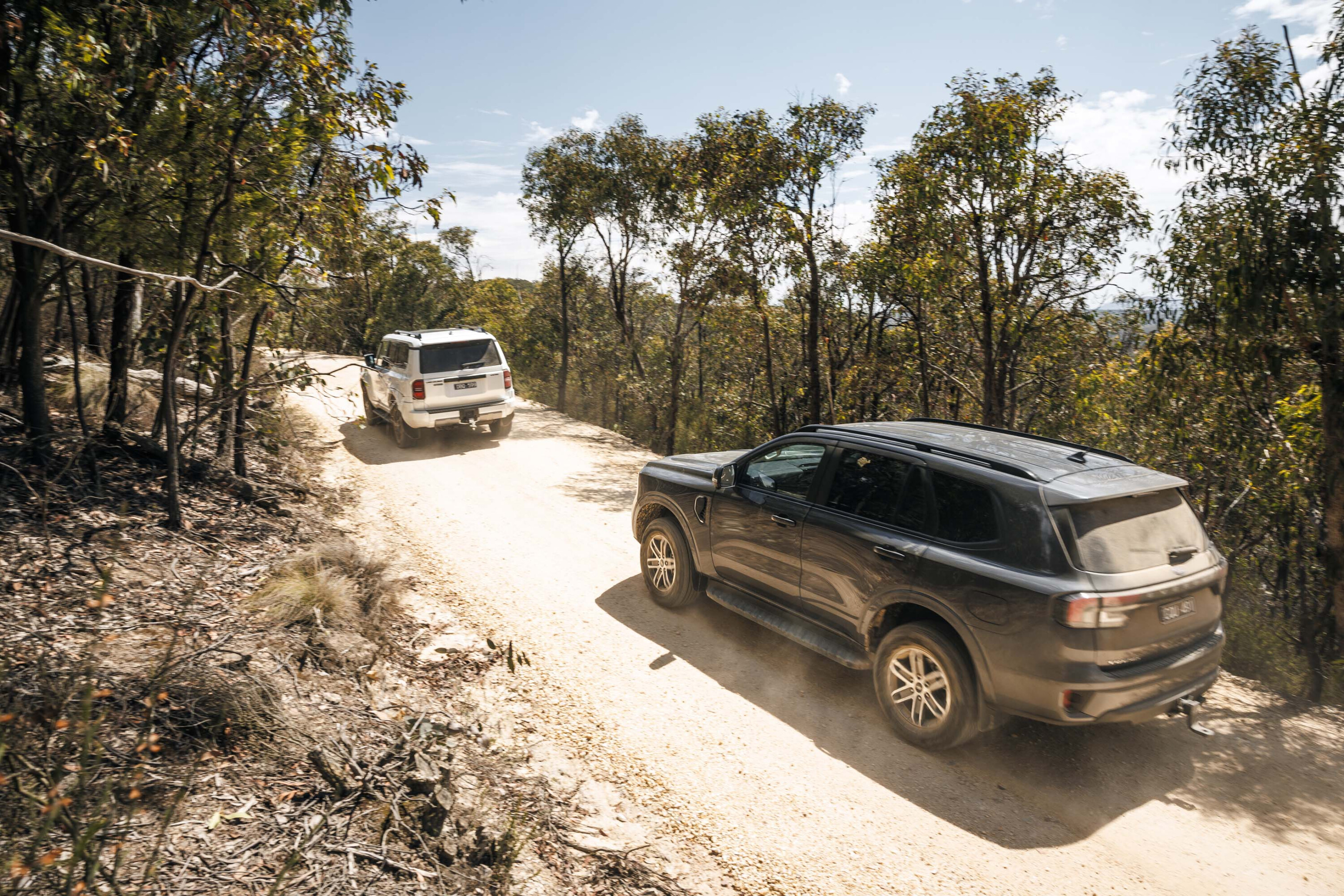
It was a similar story with the tractive ability when offroad with the calibration of Toyota’s electronic traction control fast-acting and spot on, aided by the Torsen rear differential, while the Ford spun its tyres at the first hurdle and needed its driver-selectable rear diff lock engaged to get through the deep uneven moguls on our test loop.
Annoyingly, you need to access the off-road mode in the centre screen to engage the diff lock in the Everest which is different to the Ranger where there is a button on the console.
With the more than $30k price difference between these two models it’s hard to compare them on specification but needless to say the Kakadu has far more kit included. Over and above the Everest Trend it has a premium sound system, variable suspension (for what it’s worth), heated and cooled seats, premium trim, a power adjustable steering column, huge sunroof, bigger dash screens, a chilled console and increased fuel capacity among its inclusions.
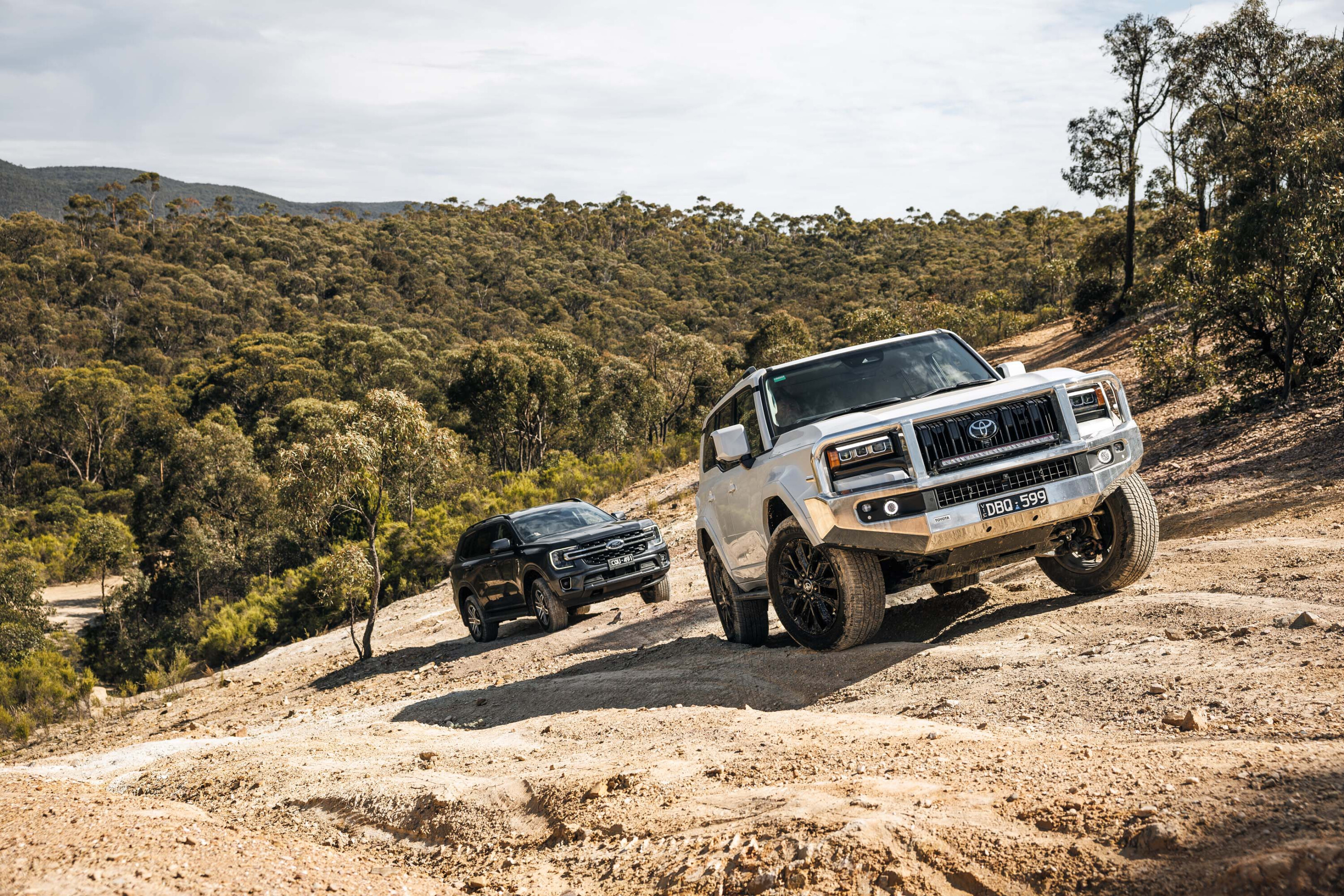
If you were to compare the Trend to the entry level Prado GX, which still costs around $4k more than the Trend, you are going back to base-level cloth trim, none of the premium upgrades and a five-seat configuration, which is a more practical option for a tourer.
In fact, we reckon the GX is the best buy in the 250 Series Prado range specifically for its five-seat setup, but also because it is the most affordable new Prado, leaving you with more to spend on touring and off-road accessories.
This leaves the Everest Trend looking like exceptional value for money with its more usable cargo area, better on-road performance, comparable off-road ability, and high-spec interior, even if not as high-spec as the Kakadu.
For less than $70k, the four-cylinder Trend more than stacks up against the Prado, and if you want more then there’s always the V6 models to choose from, as well as the very appealing Everest Tremor which is still less than $80k.
Specs
| Toyota Prado Kakadu | Ford Everest Trend | |
|---|---|---|
| Price | $99,990 +ORC | $67,040 +ORC |
| Engine | 4-cyl turbo diesel | 4-cyl bi-turbo diesel |
| Capacity | 2755cc | 1996cc |
| Max Power | 150kW@ 3000-3400rpm | 154kW @ 3750rpm |
| Max Torque | 500Nm @ 1600-2800rpm | 500Nm @ 1750-2000rpm |
| Transmission | 8-speed automatic | 10-speed automatic |
| 4×4 System | Full-time 4×4, high and low range | On demand 4×4 with 2WD, 4×4 high and low rangeu00a0 |
| Construction | 5-door wagon on a ladder frame chassis | 5-door wagon on a ladder frame chassis |
| Front suspension | Wishbone and coil IFS | Wishbone and coil IFS |
| Rear suspension | Multilink coil live axle using Panhard rod | Multilink coil live axle with Watts linkage |
| Tyres | 265/50R20 on alloy wheels | 255/60R18 on alloy wheels |
| Kerb weight | 2595kg | 2383kg |
| GVM | 3200kg | 3100kg |
| GCM | 6600kg | 6250kg |
| Towing capacity | 3500kg | 3500kg |
| Payload | 605kg | 717kg |
| Seats | 7 | 7 |
| Fuel tank | 110L u2013 17.4L Adblue | 80L u2013 18L adblue |
| ADR fuel consumption | 7.6L/100km | 7.2L/100km |
| On test fuel consumption | 9.8L/100km | 8.9L/100km |
| Approach angle | 32u00b0u00a0 | 30.4u00b0 |
| Rampover angle | 25u00b0 | 22.2u00b0 |
| Departure angle | 17u00b0 | 25.3u00b0 |
| Ground clearance | 221mm | 229mm |
| Wading depth | 700mm | 800mm |
We recommend
-
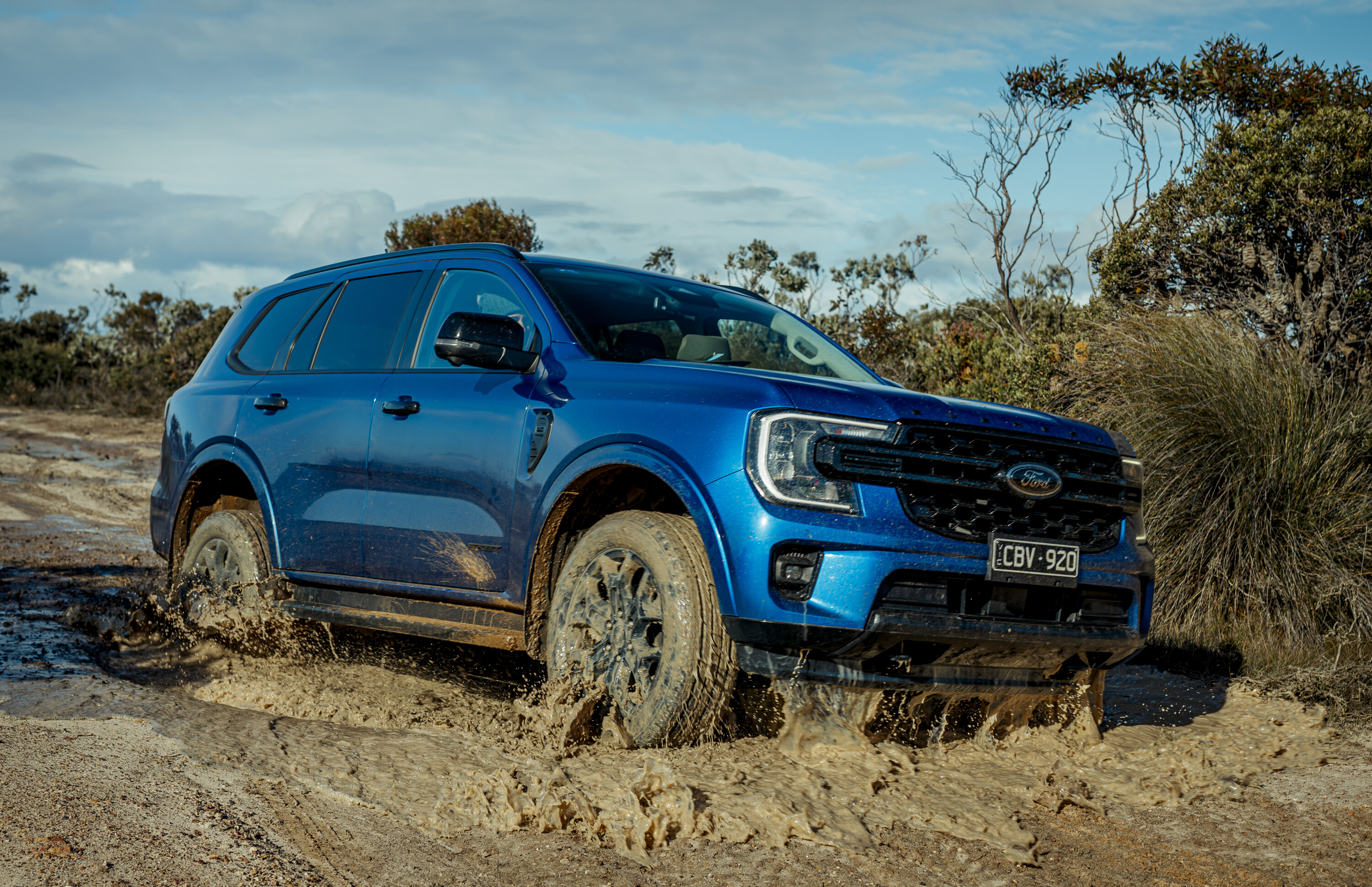 Reviews
Reviews2024 Ford Everest review: Full range detailed
A deep dive into the Everest's range including price, interior, boot space, safety, and performance
-
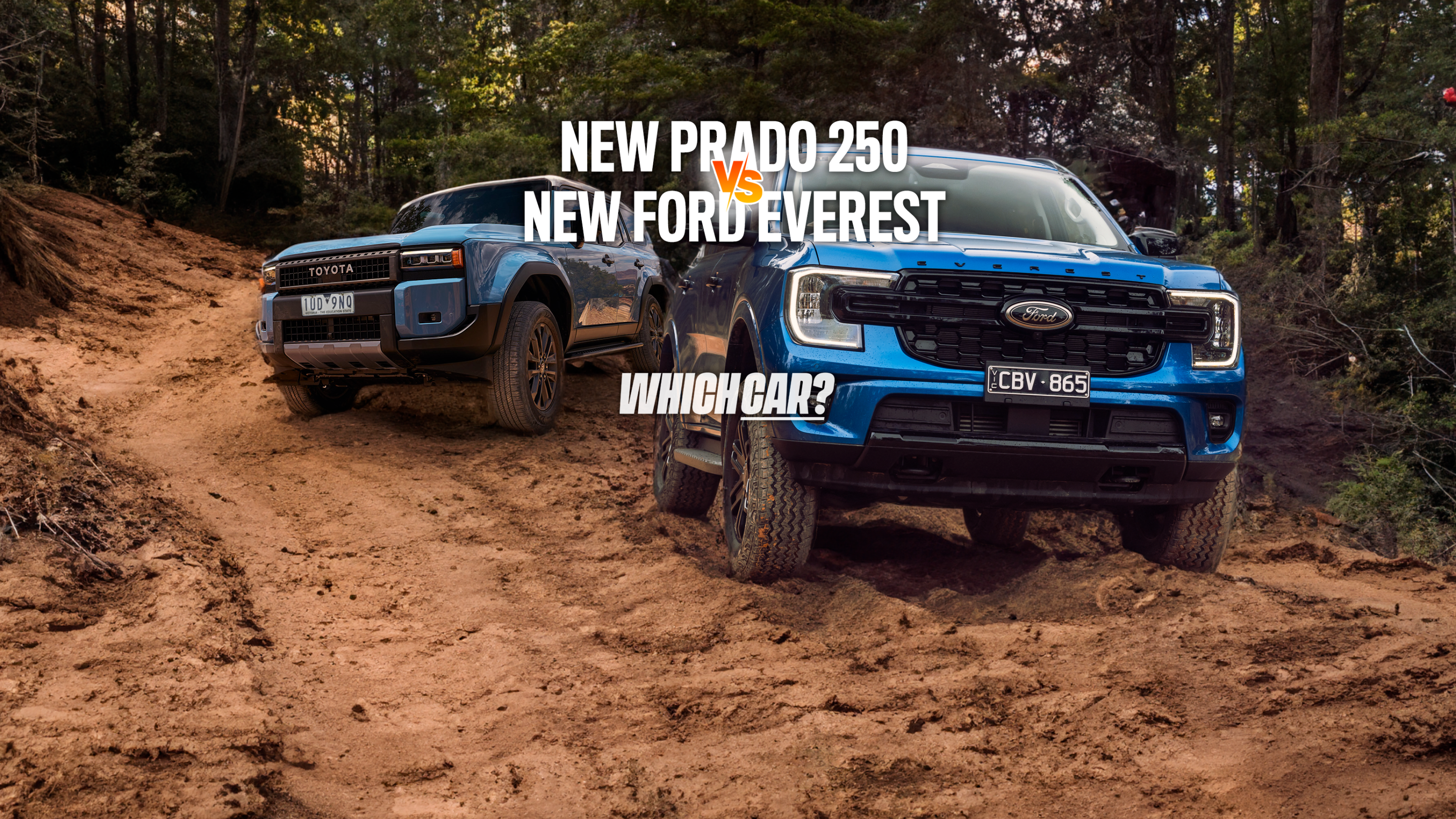 4x4 Comparisons
4x4 ComparisonsNew 2024 Toyota Prado v Ford Everest: SPEC BATTLE!
How does Ford’s reigning Car of the Year provisionally stack up against the hugely hyped fifth-generation Toyota Prado? Let’s go to the spec sheets and find out


